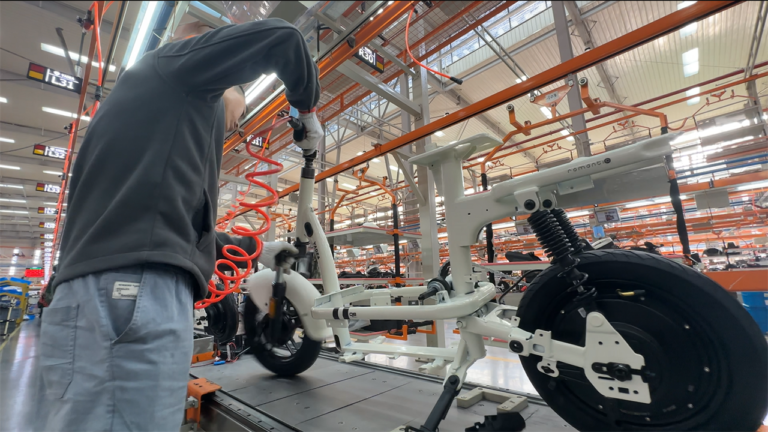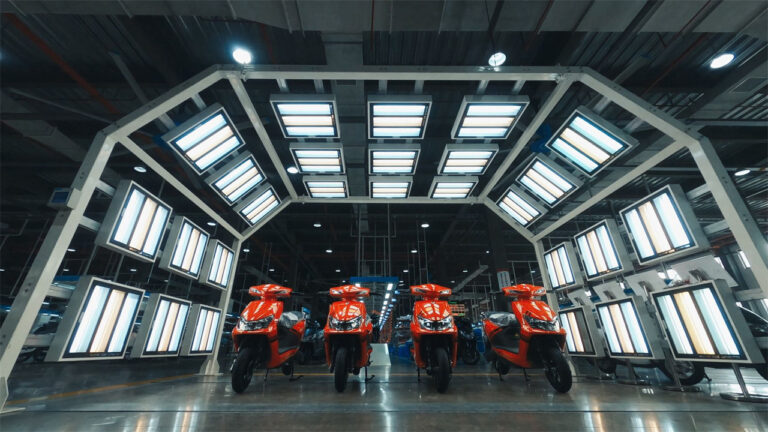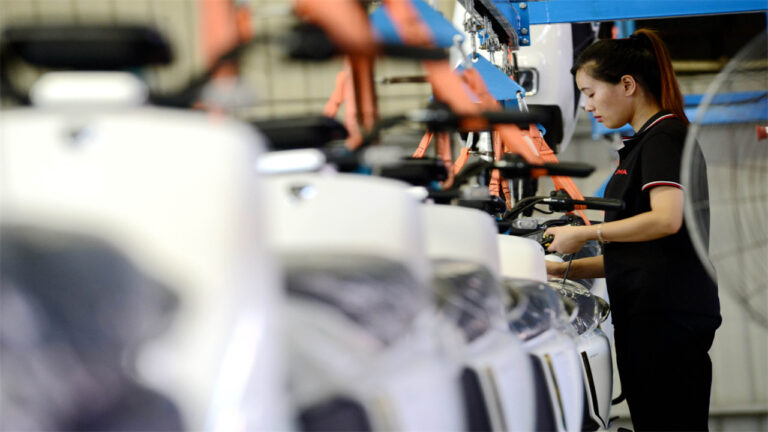2 Wheel Motorcycle Assembly Line
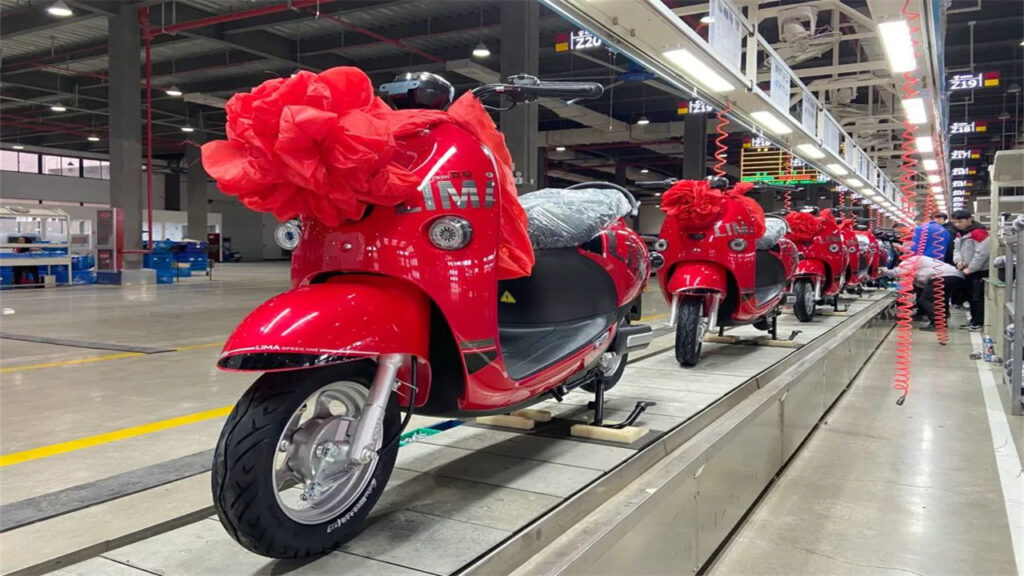
Suitable to Assemble/Produce 2 wheel Motorcycles, 2 wheel Scooters, 2 wheel Electric-cycles, 2 wheel E-Bikes, Bicycles, and so on.

A 2-wheel Motorcycle Assembly Line is a highly automated and information-based production process specifically designed for assembling motorcycles. The main features of this assembly line include:
- Automated Assembly Processes:
Utilizing robots and automated equipment, such as automatic screw machines and welding robots, to efficiently complete various assembly tasks. - Intelligent Quality Control:
Employing vision recognition systems and sensors for real-time monitoring to ensure product quality and safety. - Data Analysis and Optimization:
By analyzing production data, understanding the operational status and efficiency of the production line in real-time, and making optimizations and improvements. - Tracking and Management Systems:
Enabling comprehensive supervision and control of the production process, identifying and resolving production issues promptly. - Man-Machine Collaboration:
Combining manual operations with automated equipment for precise operations and adjustments. - Flexible Production Capacity Design:
The assembly line can adapt to the production and assembly of different products, meeting market demands. - Parts Preparation and Inspection:
Conducting quality inspections on all parts before assembly begins to ensure they meet specifications and quality standards. - Frame Assembly:
Assembling the various parts of the frame to form the basic structure of the motorcycle. - Engine Installation and Testing:
Installing the engine onto the frame and conducting preliminary adjustments and tests to ensure performance and functionality. - Suspension System Assembly:
Installing front forks and rear shock absorbers, which are key components of the motorcycle’s suspension system.
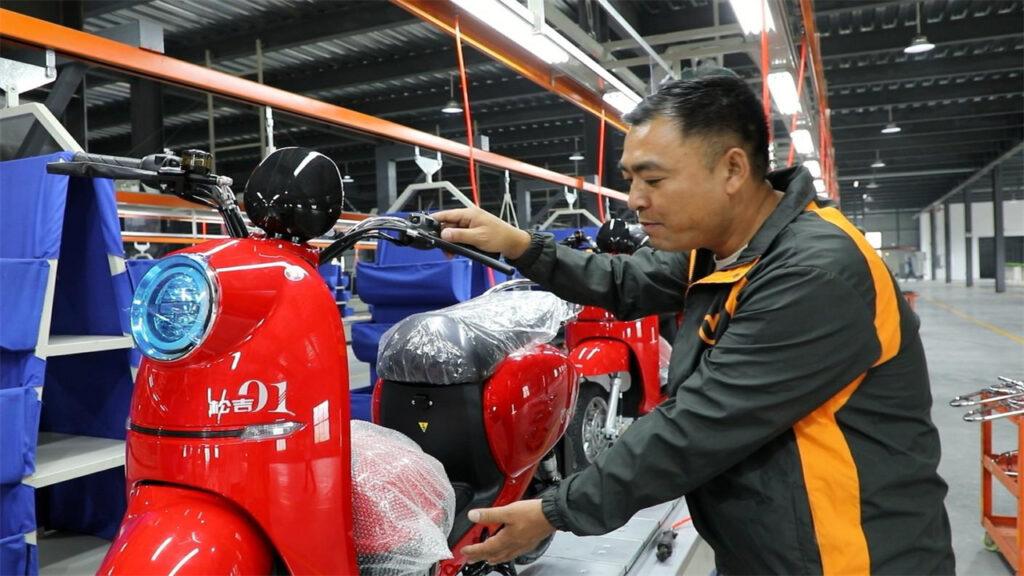
11. Wheel and Tire Assembly:
Fitting wheels and tires onto the motorcycle and performing balance and positioning.
12. Brake System Assembly:
Installing brake discs, calipers, and other brake components, and making adjustments.
13. Electrical System Assembly:
Installing batteries, electrical wiring, lights, dashboards, and other electrical components.
14. Fuel System Assembly:
Installing fuel tanks, fuel lines, fuel pumps, and other fuel system parts.
15. Body and Exterior Parts Assembly:
Installing seats, handlebars, side covers, and other body parts.
16. Functional Testing and Debugging:
Testing the motorcycle’s various systems, including the braking system, engine, electrical system, etc., to ensure everything works properly.
17. Final Inspection and Packaging:
Conducting a comprehensive inspection of the motorcycle for appearance and functionality to ensure quality standards are met, followed by packaging.
18. Information Management Systems:
The assembly line is often integrated with information management systems to enable real-time monitoring and analysis of production data, optimizing the production process.
These features collectively ensure the 2-wheel motorcycle assembly line achieves high efficiency, quality, and cost-effective production.
